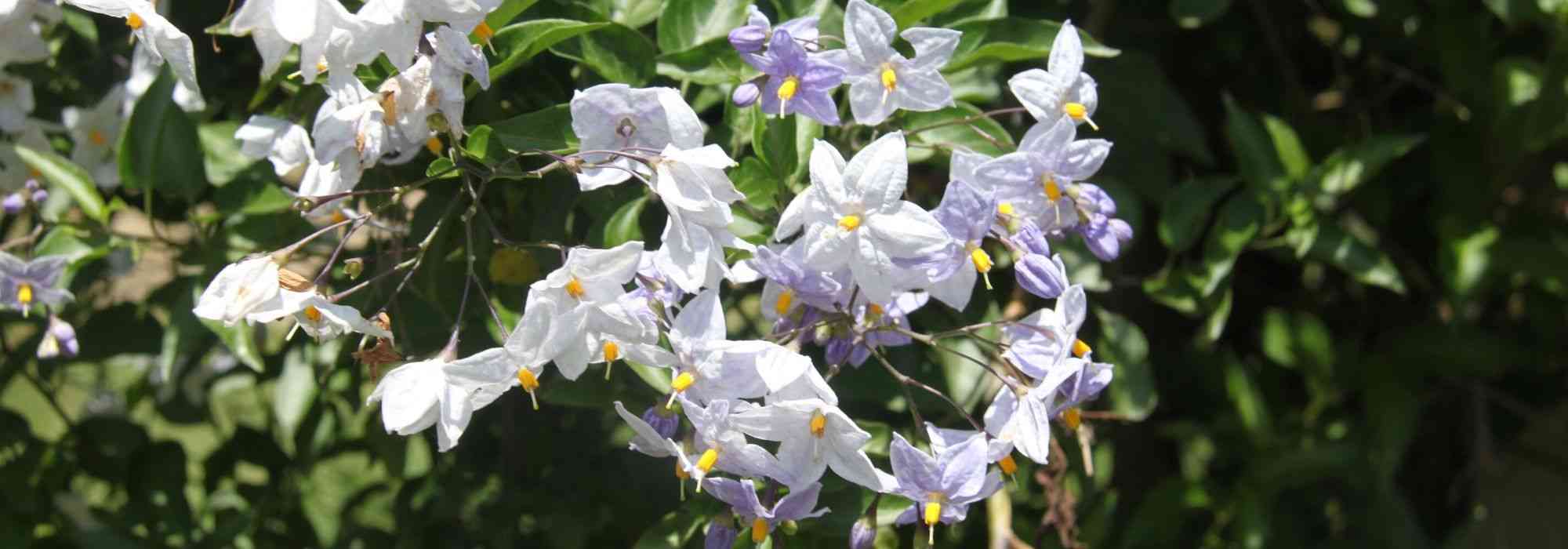
10 climbing plants for mild climates
Also ideal in a greenhouse or conservatory!
Contents
Gardeners often use climbing plants to give a wall extra character, dress a trunk or festoon a wood or metal structure. Among the wide range available, some are more tender and should be reserved for gardens where frost is not too severe nor lasts too long. Often described as Mediterranean climbing plants, they are indeed best suited to south-east regions, or, to a lesser extent, certain coastal areas of the Atlantic seaboard. These lianas, which love sun and heat, can also be grown in pots, and provide a lovely presence in a greenhouse or conservatory. Discover my selection of 10 decorative climbing plants for mild climates.
Jasmines
Spanish jasmine
Jasminum grandiflorum can adopt a shrubby or climbing habit. When trained against a support, it can reach 2.5 or 3m. With fairly rapid growth, its semi-evergreen foliage bears scented flowers from May to October, immaculately white with pinkish undersides. Undemanding in care, it can tolerate frosts of around -6°C, provided these last only a few days.
Arabian jasmine
Jasminum sambac can remain evergreen in mild climates and, depending on support provided, displays its white flowers, sometimes double, and can reach up to 3m. Main flowering occurs from June to September, but it is not uncommon to see a few flowers throughout the year when grown under cover. Fast-growing, its foliage may be lost below -5°C, but if cold is brief it will regrow from the stump in the growing season.
Azores jasmine
Also called Madeiran jasmine, Jasminum azoricum can climb to 3 or 4m. With fairly rapid growth, its small white flowers, which open between June and September, stand out against its dark evergreen foliage. It too can regrow from the stump if short frosts (around -6°C) have killed its above-ground growth.
Primrose jasmine
Jasminum mesneyi (syn. Jasminum primulnum) owes its vernacular name to the resemblance of its pure yellow flowers to those of wild primrose. Its large corollas brighten late winter, generally around February, and can continue to open until April. A repeat flowering in autumn is even possible. Slightly scented, its corollas unfold on foliage that remains evergreen in mild climates. This jasmine can withstand temperatures of around -10°C to -12°C, but its foliage is lost from -7°C. Fast-growing, its branches need to be trained.
Starry wild jasmine
Also called African star jasmine, Jasminum multipartitum must not be confused with another star jasmine (Trachelospermum jasminiodes). Tender, this liana tolerates temperatures of around -5°C but prefers cold spells to be brief. Its white flowers dot evergreen foliage (in mild climates) between May and August. With fairly rapid growth, this jasmine can climb to 3m if trained.
Chilean jasmine
Mandevilla laxa offers a very long display of white flowers, which fill garden or terrace with fragrance from June to October. Its foliage also shows attractive orange tones at the end of the season, before falling. In mild climates (occasionally down to -5°C), it can be semi-evergreen to evergreen. 3 to 4m tall, its stems twine round supports unaided. This liana tolerates winter temperatures of around -8°C to -10°C.
Virginia jasmine
Gelsemium sempervirens is a voluble liana with aromatic evergreen foliage and soft yellow flowers that appear from late spring to early summer. Its scented flowers sometimes perfume the autumn as well. Fast-growing, its twining stems entwine supports up to 3m. The plant does poorly below -5°C. All parts of the plant are poisonous, and it is sometimes advised to grow it under cover, because its nectar is somewhat toxic to bees.
Their requirements
Grow these species in ground in mild climates, in fertile, deep soil that stays cool in summer but is well drained. Small amounts of lime in the soil are not a problem. A warm, sunny exposure ensures good flowering. Partial shade can be considered in regions with very hot summers.
→ Discover our range of jasmines, our advice sheet How to choose a jasmine, and our sheet on planting, pruning and maintenance of jasmine.
Glory Lily
Gloriosa rothschildiana, or Glory lily, is a very decorative exotic liana with large flowers in warm tones of yellow and red, reminiscent of those of the lily. Stamens and pistils are particularly striking. Flowering occurs in summer and adorns a deciduous, lanceolate, dark green and glossy foliage. Plant is poisonous if ingested.
Requirements
Plant in a sunny, warm position, in well-drained, cool soil. In southernmost regions, it can remain in the ground if well protected.
Discover other Climbers
View all →Available in 0 sizes
Available in 0 sizes
Available in 0 sizes
Available in 0 sizes
Available in 0 sizes
Available in 1 sizes
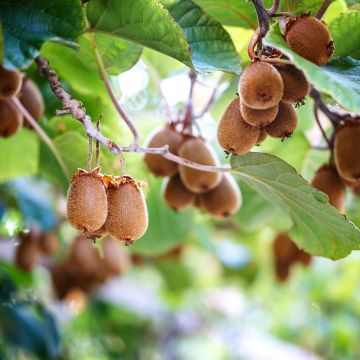
Available in 2 sizes
Available in 1 sizes
Available in 1 sizes
Cape honeysuckle
Tecomaria capensis is a sarmentous bush. It graces the garden with late flowering, between late August and September. Flowers, in long trumpets of bright orange, are visible from afar against its bright green, dissected and glossy foliage. Long pods follow the flowering. In a pot it reaches about 1.5 m, but can grow to 2.5 m in the ground, even more if its above-ground parts are not destroyed by frost. Not very hardy, it can, however, withstand around -7°C once well established, but its foliage disappears below -2°C.
Requirements
Rich, well-drained soil and a sunny position are ideal. Protect young plants well from frost.
Read also
10 climbing plants for full sunHardenbergia violacea
The Australian sarsaparilla is a climbing plant that can also be used as a creeping plant or as a shrub. With rapid growth, it reaches 2 to 3 m. Its foliage lanceolate, dark green with lighter veins is studded, between February and June, with clusters of small mauve-violet flowers whose upper petal is highlighted by two yellow spots. Some resemblance to the flowering of sweet pea or wisteria is often noted.
Its requirements
Acidic, light and well-drained soil that retains some freshness is necessary for good growth. Plant in sun or partial shade. This liana tolerates short frosts around -4°C, so it should be grown in a pot and overwintered under shelter in most regions.
Indian morning glory
Ipomea learii is an exuberant liana with impressive growth. Capable of reaching 10 m in one season, this climbing plant is covered, from July to October, with funnel-shaped flowers. The corollas of a blue tending towards mauve open early in the day, then close and fade to purplish hues during the hottest hours. Evergreen in mild climate, its foliage dies back from -3°C, and its stump, once well established, can withstand -8°C for short periods. Resistant to drought and largely disease-free, it requires space and can be trained against supports or sprawl along ground.
Requirements
Indian morning glory appreciates sunny, sheltered positions, in any fertile, deep, moist but well-drained soil. Soil pH matters little.
Summer wisteria
Millettia Japonica ‘Satsuma’ is also called Summer wisteria, because its corollas resemble those of this climbing plant. This vigorous, less well-known liana produces a beautiful flowering, in clusters of purplish-red flowers with a delicate fragrance, which occurs from summer to autumn. Its glossy green foliage reaches 5 or 6 m and is semi-evergreen in regions with a mild climate, but Summer wisteria does not tolerate temperatures below −8°C.
Requirements
Plant it in neutral or acidic, deep, rich and well-drained soil, in a warm sunny position.
→ Discover our selection of Wisterias, as well as our guide on how to plant, prune and care for Wisterias.
Tuberous nasturtium
As beautiful in the garden as it is in the kitchen, the tuberous nasturtium, or Tropaeolum tuberosum, is a liana 2 to 2.5 m tall, with grey-tinged green foliage typical of nasturtiums. Its late flowering occurs at the end of August, in elongated yellow-orange trumpets, fitted with a prominent spur. All parts of the plant are edible, and this nasturtium deserves to be grown both as an ornamental and as a vegetable plant.
Its tubercles cannot, however, withstand severe frosts, especially in waterlogged soil, and its hardiness limit is -5°C.
The ‘Ken Aslet’ variety is somewhat less vigorous and its orange flowers are larger.
Requirements
Grow this nasturtium in cool, deep, well-drained soil, regardless of pH. Choose a sunny position.
→ Find our nasturtium varieties, and our guide on How to sow, plant and maintain nasturtium.
Solanum
Solanum are charming lianas woody climbing stems with generous flowering. Their elegant dark green foliage may redden when touched by cold. Evergreen to semi-evergreen, it is studded with small flowers in the shape of a star. Light blue in Solanum jasminoides ‘Bleu’ (jasmine nightshade), they are white for variety ‘Album‘. Solanum crispum ‘Glasnevin’ displays corollas of an intense violet-blue. Flowering is followed by small decorative berries, violet or cream depending on species. Fast-growing, Solanum reach 5 to 6 m in height, and training helps maintain a more harmonious habit. Not very hardy, these climbers suffer below -8°C to -12°C. They show good resistance to disease and drought.
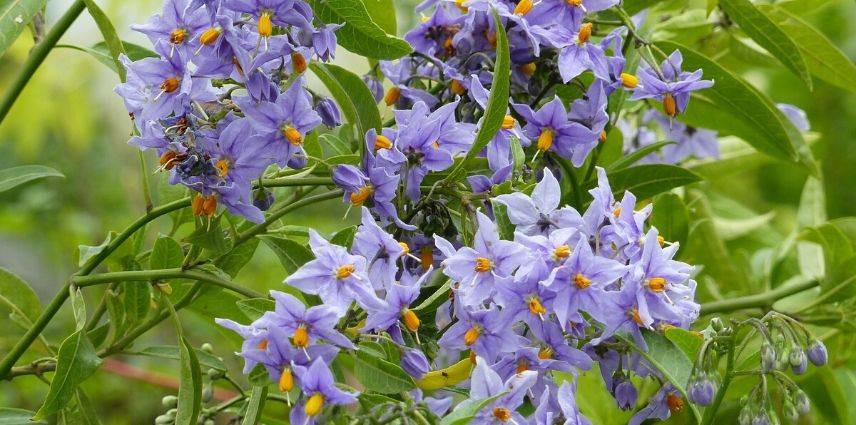
Solanum crispum ‘Glasnevin’
Their requirements
Solanum appreciate sunny positions, as well as light, humus-bearing, cool but well-drained soils, even slightly calcareous.
→ Find our varieties of Solanum, and our care sheet on planting, cultivation and pruning.
Passionflowers
Passionflowers, or Passion flowers, bring exoticism and originality to the garden. These fast-growing lianas climb 3 to 8 m, sometimes further. Foliage, evergreen to semi-evergreen, consists of large glossy leaves usually lobed, but they are primarily grown for their large flowers with incomparable graphic design. From summer to autumn, large flowers with particularly striking graphic structure follow one another in a range of sometimes mixed colours. Scent varies from subtle to strong, and some varieties, such as ‘Perfume Passion‘, are selected for fragrance. True works of craftsmanship, flowers continue to open alongside large ovoid fruits in orange, purple, pink or browner tones that appear late in the season. Edible, they do not all offer the same flavour quality. Many varieties need to be grown under very mild climate, where temperatures do not fall below -2°C to -5°C. Examples include :
- Passiflora allardii : white flowers tinged with purple, lavender crown
- Passiflora subpeltata : white petals and filaments
- Passiflora vitifolia : elongated, pointed petals, very bright orange-red
- Passiflora ‘Byron Beauty’ : unusual frilled violet petals, early flowering
- Passiflora ‘Anastasia’ : deep pink, red crown, white filaments.
- Passiflora quadrangularis : giant, red flowers, purple and white filaments
- Passiflora mucronata : reserved for insomniacs! Night-blooming, white
Their requirements
Passionflowers tolerate all fertile soil, in full sun or partial shade, in locations sheltered from cold winds.
→ On our site, we offer a wide range of Passionflowers, as well as a dedicated sheet on their planting, care and how to prune them.
Cruel plant
Araujia sericifera is a climbing plant with glaucous green foliage, slightly downy beneath. With rapid growth, its stems can reach 5 m. Between August and November, the plant produces clusters of charming pale pink, small bell-shaped flowers with darker veins. Fragrant flowering is followed by long pods that contain numerous seeds with high seed viability. This climbing plant is also available in white as variety ‘Alba‘. Its sensitivity to cold (-5°C) means it should be grown under cover, and it is in a greenhouse or conservatory that we recommend situating it, because its name ‘cruel plant’ comes from its ability to trap pollinators, particularly butterflies.
Requirements
Grow it in a pot, under cover, in a rich mix that is fresh yet well-drained.
→ Discover our Araujia varieties.
- Subscribe!
- Contents































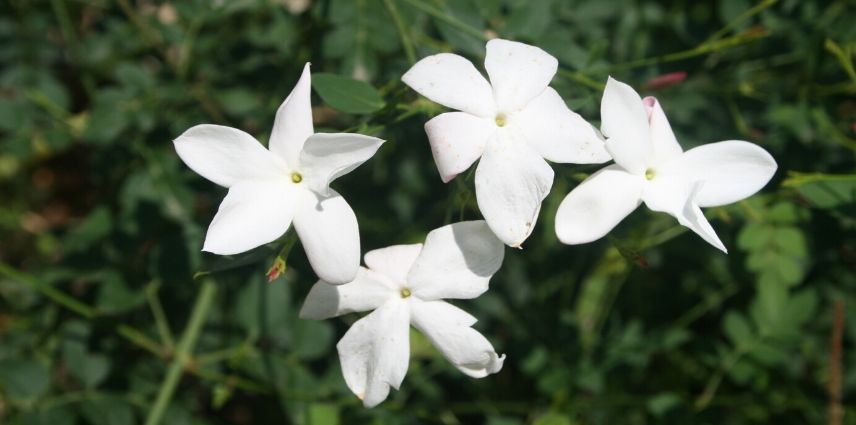
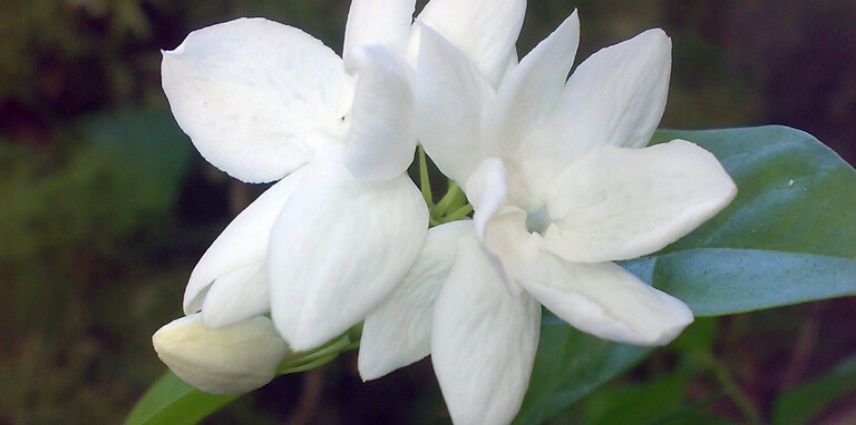
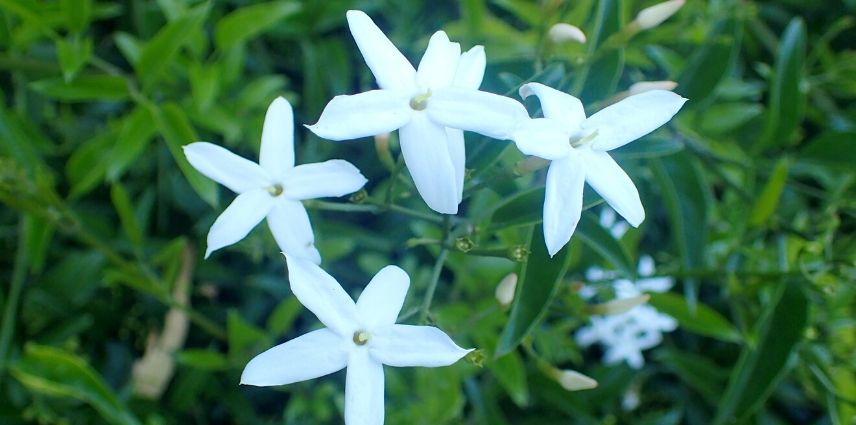
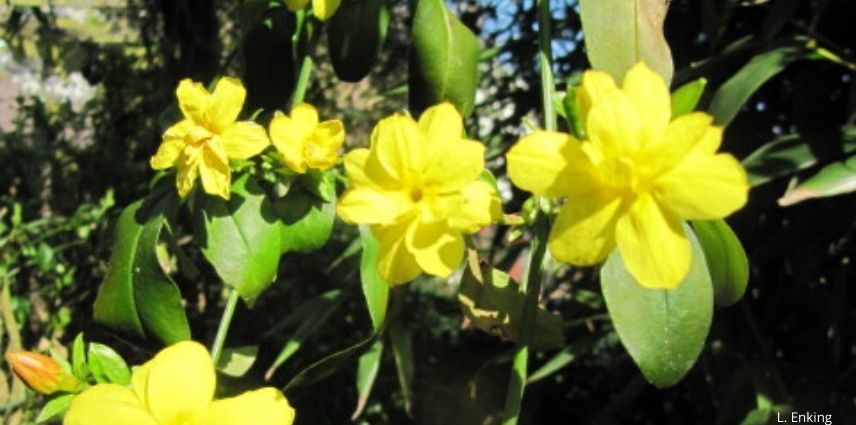
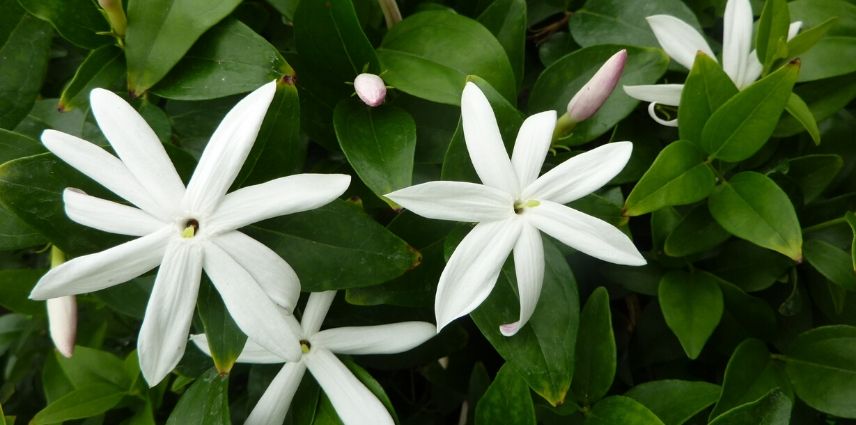
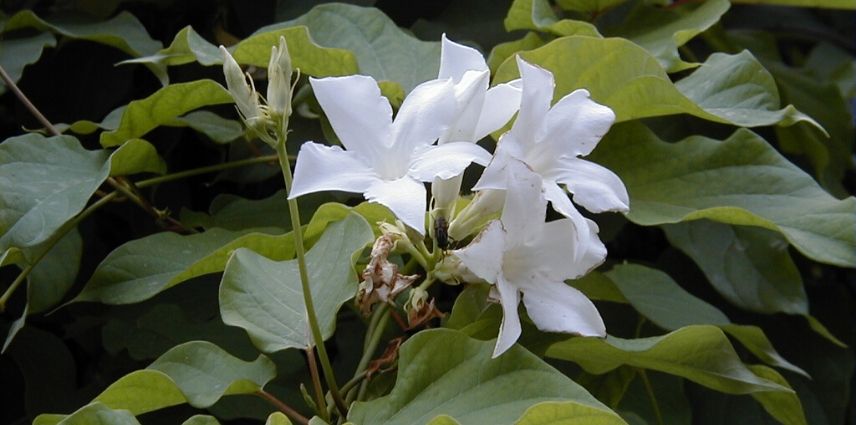
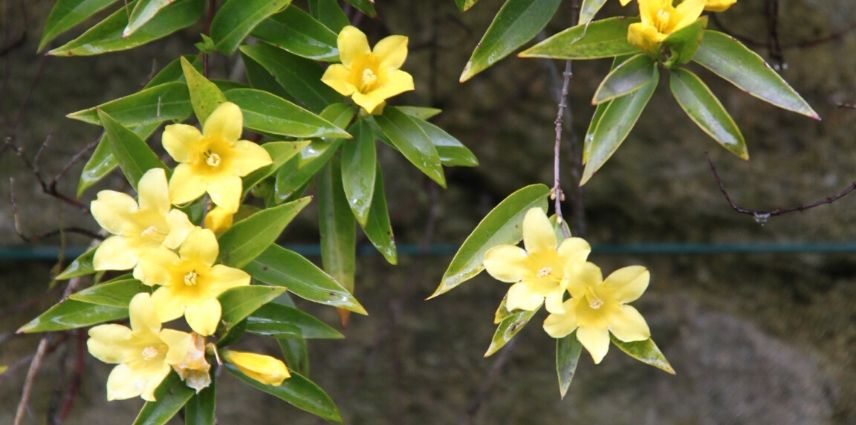
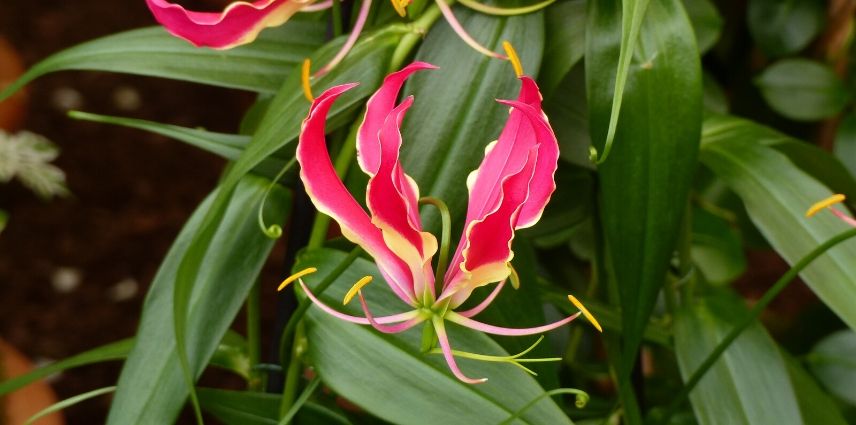
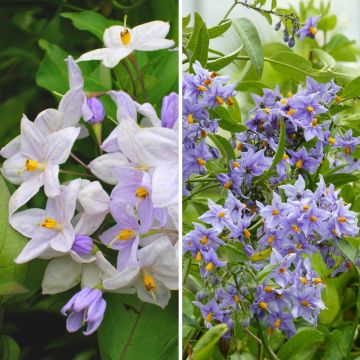
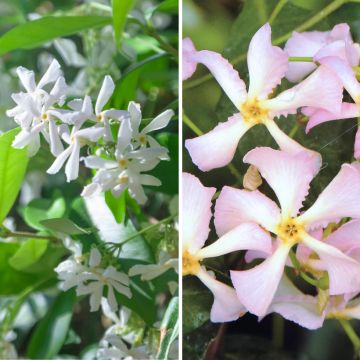
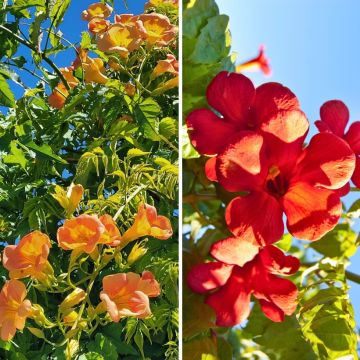
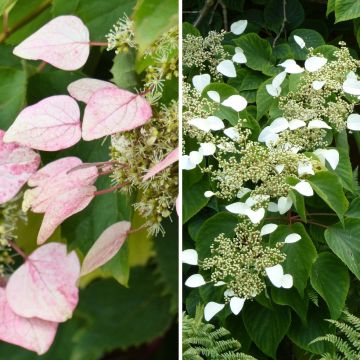
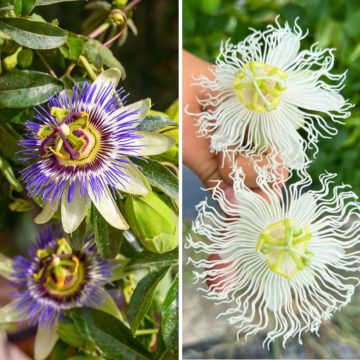

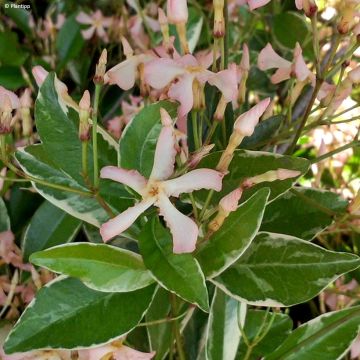

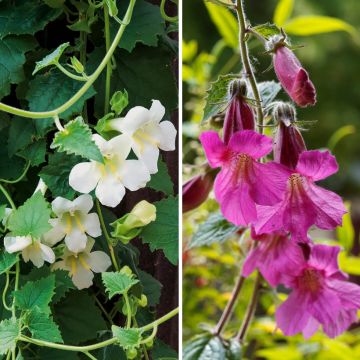
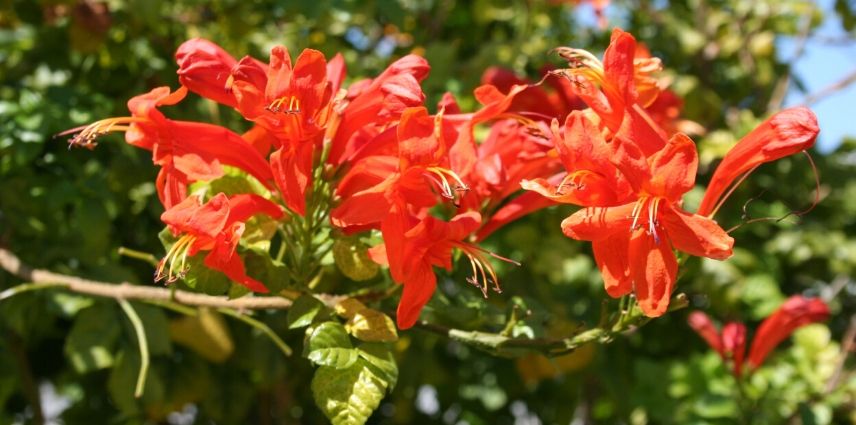
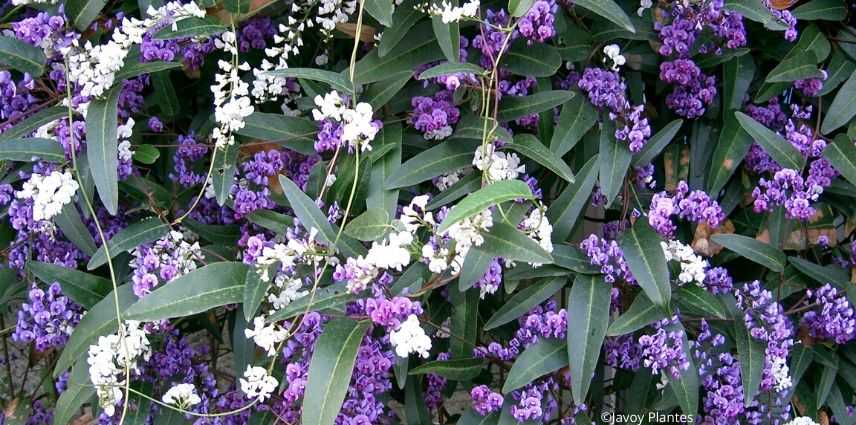
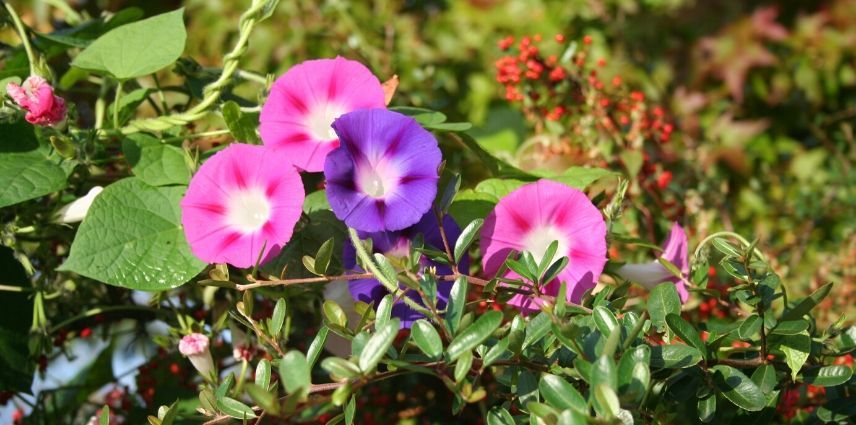
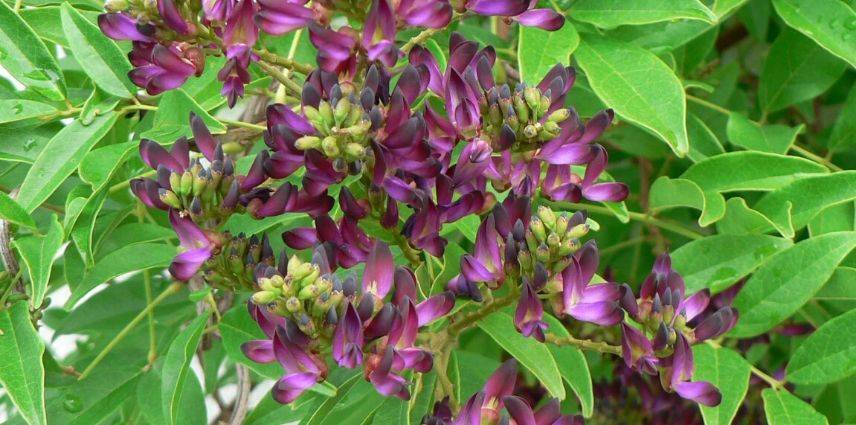
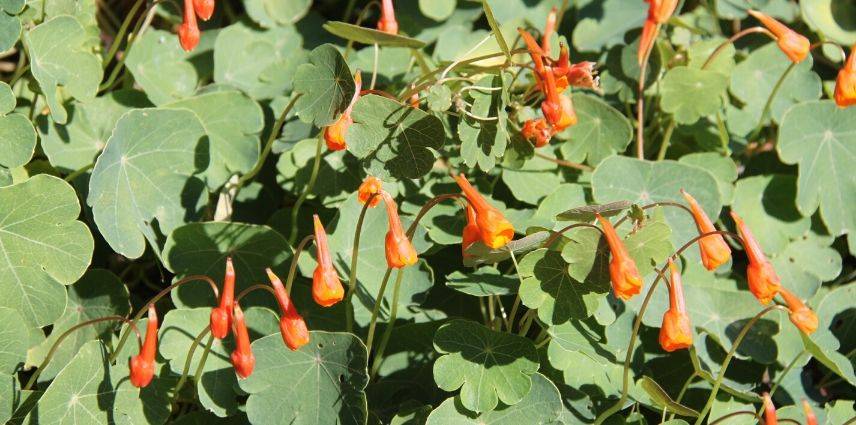
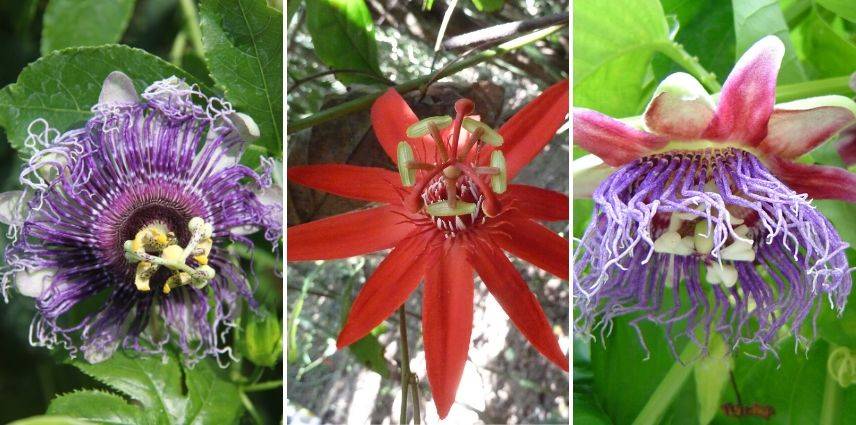
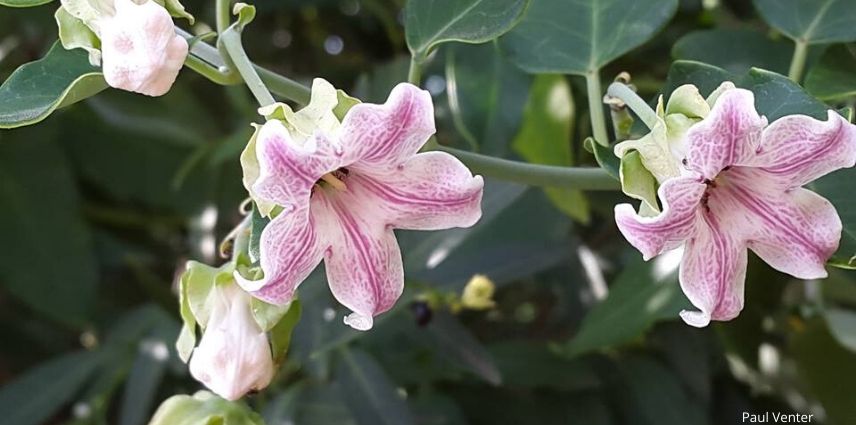
Comments